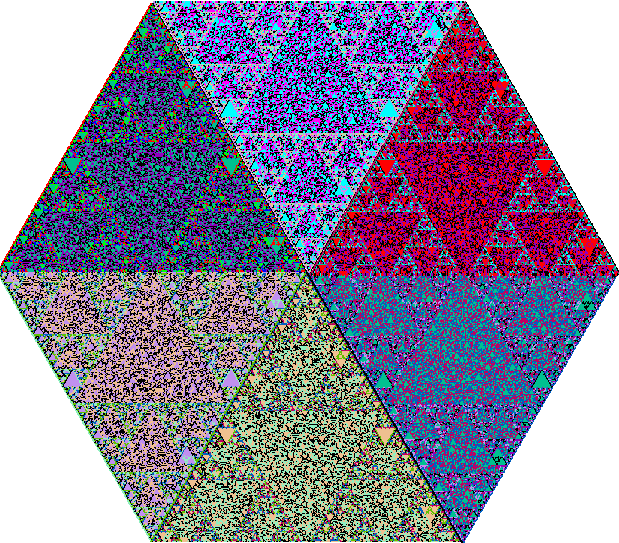- About MAA
- Membership
- MAA Publications
- Periodicals
- Blogs
- MAA Book Series
- MAA Press (an imprint of the AMS)
- MAA Notes
- MAA Reviews
- Mathematical Communication
- Information for Libraries
- Author Resources
- Advertise with MAA
- Meetings
- Competitions
- Programs
- Communities
- MAA Sections
- SIGMAA
- MAA Connect
- Students
- MAA Awards
- Awards Booklets
- Writing Awards
- Teaching Awards
- Service Awards
- Research Awards
- Lecture Awards
- Putnam Competition Individual and Team Winners
- D. E. Shaw Group AMC 8 Awards & Certificates
- Maryam Mirzakhani AMC 10 A Awards & Certificates
- Two Sigma AMC 10 B Awards & Certificates
- Jane Street AMC 12 A Awards & Certificates
- Akamai AMC 12 B Awards & Certificates
- High School Teachers
- News
You are here
Patterns in Pascal's Triangle - with a Twist - Some Questions about Recognizing Patterns
Recognizing patterns depends on our ability to perceive them. One interesting sidebar that arose in our study of these patterns has to do with human visual perception. The patterns we can find in the D3 triangles are much more apparent with some color assignments than with others. This of course leads us to questions about how humans perceive colors. We also wonder how perception might differ from individual to individual. There are a wealth of interesting questions that could be researched in this area. Some of the questions could probably be answered with a review of the literature in psychology of perception or in biology. Others could lead to further experimentation in these areas.
We have not pursued these issues, but we wish to bring these questions to your attention, and we have constructed an animation to illustrate the phenomena to which we refer. You can also see the differences among the six triangles in the hexagon below. All six were generated the same way but using different color assignments. If you read pages 8-11, you may recognize at least some of these as PascGalois triangles for D3.

There are also questions about which kinds of patterns people would find aesthetically appealing. It might be interesting to study whether people prefer hexagons made with Pascal's Triangles mod n for n prime vs. n composite or for values of n with different prime factors vs. values with the same prime factors. For example, see this page.
Another question of interest: How many different colors can the human eye distinguish in patterns such as these? And a related question: How do we generate the maximum number of distinguishable colors on a computer screen? Interestingly enough, having once generated colors for the computer screen, it is a non-trivial problem to generate equivalent colors for print. We have a pretty good algorithm for generating 16 colors and can expand to a reasonable set of 64 colors but are not certain that they are all truly distinguishable.
There is definitely work to be done in this area. Those who study art and graphical design struggle with similar issues. These issues suggest some interesting projects that students from a number of disciplines might wish to tackle.
Kathleen M. Shannon and Michael J. Bardzell, "Patterns in Pascal's Triangle - with a Twist - Some Questions about Recognizing Patterns," Convergence (December 2004)




